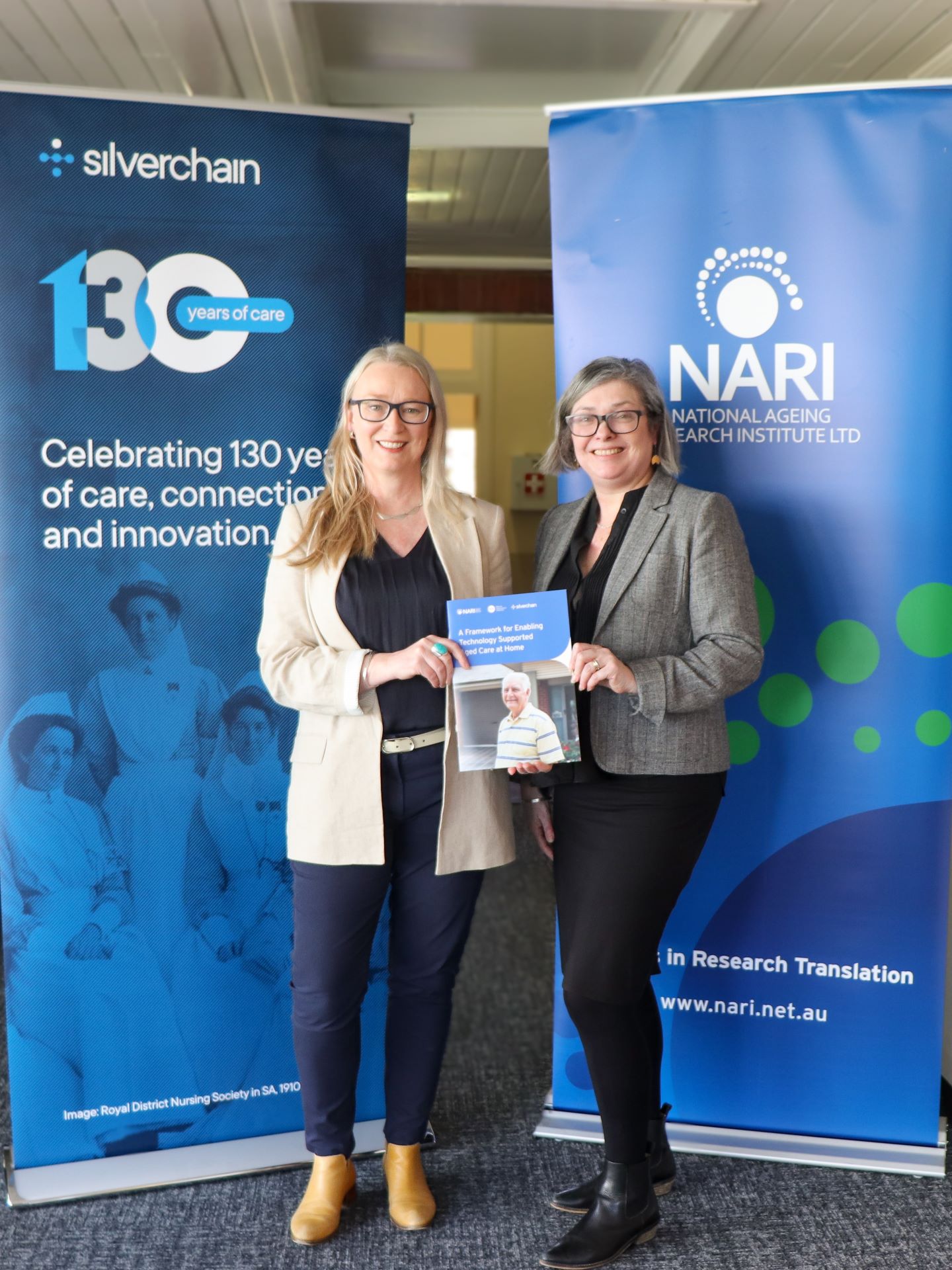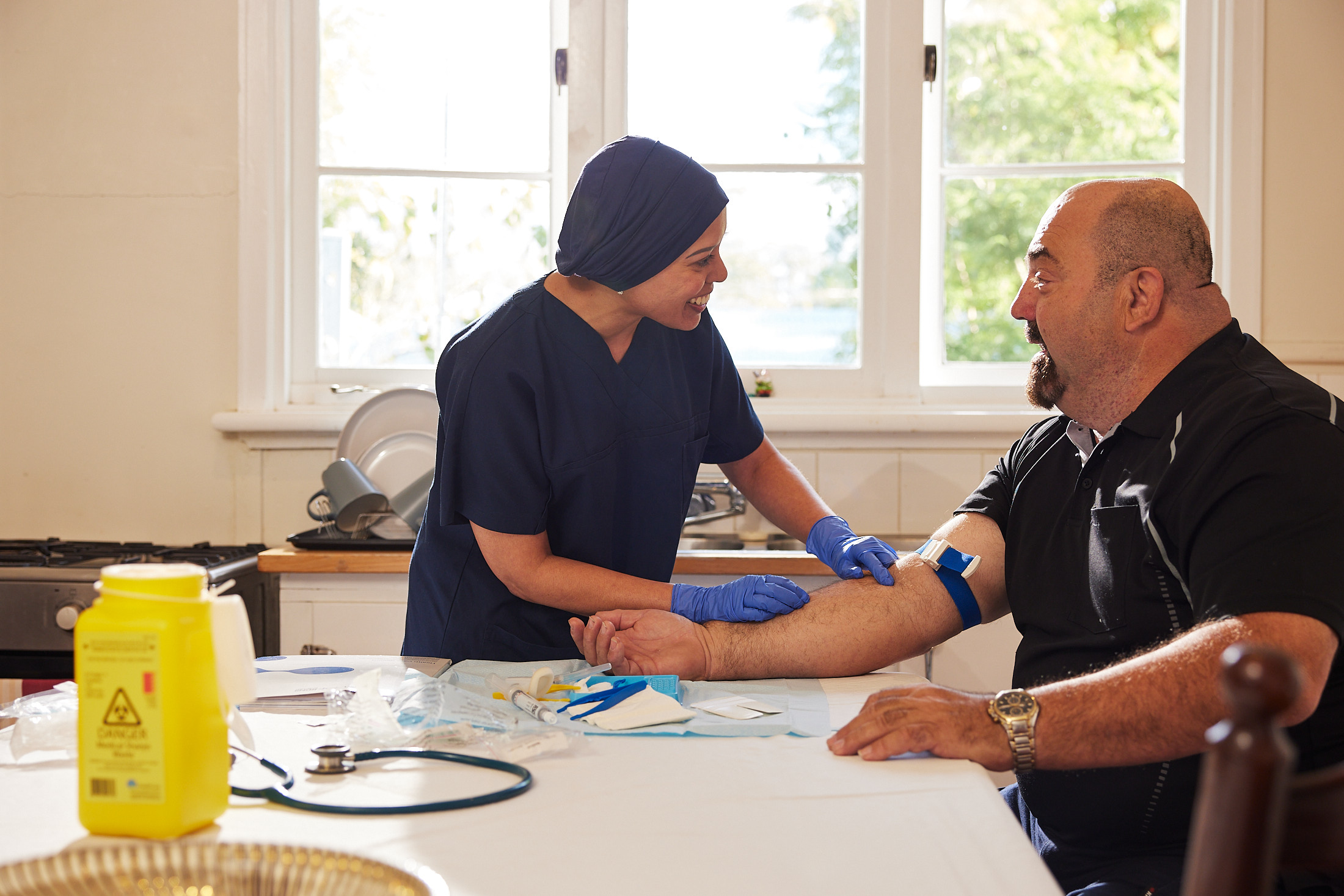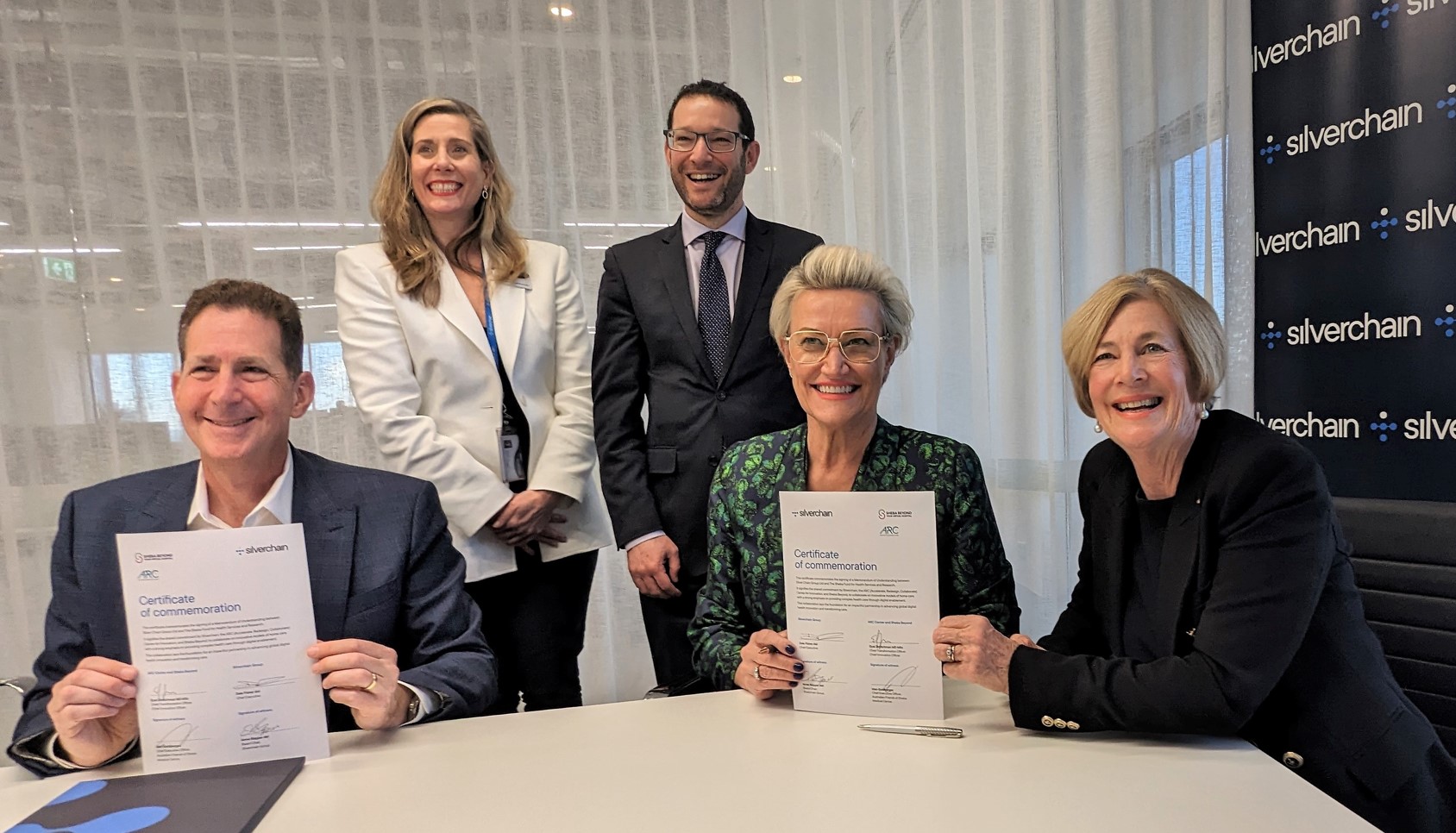- Home
- Latest news from Silverchain
- Helping aged care providers apply new technology
Helping aged care providers apply new technology
New evidence-based framework to support in-home aged care providers implement digital technologies
A new evidence-based framework has been developed to help guide in-home aged care providers as they plan and deliver technology-supported services. Officially launched in Melbourne today, the Framework for Enabling Technology Supported Aged Care at Home was developed in partnership with the National Ageing Research Institute (NARI) and Silverchain, Australia’s leading home care provider.
The framework provides a practical step-by-step guide for in-home aged care providers on how best to implement digital technologies when in their everyday service delivery. It was devised specifically for the Australian context following a series of research projects. This pioneering work was facilitated by the NARI-led Melbourne Ageing Research Collaboration (MARC) and made possible through funding from the Aged Care Research and Industry Innovation Australia (ARIIA) grants program.
Speaking at the launch via video, Assistant Minister for Health and Aged Care the Hon Ged Kearney MP praised the collaborative work undertaken by NARI and Silverchain and said it aligned “perfectly” with the Department of Health and Aged Care’s Data and Digital Strategy and its accompanying action plan that was released in July.
NARI Director of Clinical Gerontology, Associate Professor Frances Batchelor, said that while new health-related technologies were developing rapidly across various sectors, in-home aged care providers were still in the early stages of adopting these.
“With older Australians living independently at home for longer, the need for technology-supported in-home models of care has increased,” Associate Professor Batchelor said.
“We’ve heard from in-home aged care providers that there are substantial barriers to introducing technology in the home environment, such as difficulties in encouraging uptake and embedding technology into service delivery processes. We joined with Silverchain to develop specific guidance for implementing digital tools in an effective, efficient and person-centred way.
“This framework provides a guide for best-practice implementation of health-related technology, specifically for older people and the aged care workforce in home care settings across Australia. It provides information on how to reduce barriers to implementing technology and leverage enablers to ensure quality of care. It also offers practical tips and a checklist of key considerations when developing a technology implementation plan.”
Silverchain Director of Research Discovery, Dr Tanya Davison, said that in-home aged care providers recognised the potential for digital technologies to improve outcomes for older people and would welcome practical strategies to assist in embedding technologies into their day-to-day work.
“The research we’ve done has shown that older people are increasingly using technologies in their lives and the in-home aged care workforce is ready to try innovative new approaches. But simply making technology available isn’t enough for success. We need to make sure the specific technologies selected and the ways we implement them are carefully designed. This includes consideration of the kinds of training and supports that are required,” Dr Davison said.

“The framework was informed by several studies conducted at Silverchain, including a survey of current clients to understand their use of technology, and a series of surveys, interviews and workshops with our home care workers.”
Program Manager of the Melbourne Ageing Research Collaboration (MARC), Sue Williams, congratulated both organisations on their commitment to ensuring the development of an evidence-based resource that is both practical and context-specific.
“The collaborative approach adopted by NARI in partnering with Silverchain helped to understand the key barriers to using technology as part of service delivery. They heard directly from older Australians about what was important to them and in-home care workers about the best ways to roll out new initiatives. This innovative new framework is the first of its kind. It will help providers effectively adopt and harness exciting new technologies in supporting the provision of high quality in-home aged care for older Australians,” Ms Williams said.
Assistant Minister Ged Kearney said: “The department’s strategy and action plan were developed to respond to the increasing use of data and digital technology right across the aged care sector, while encouraging the sector to collaborate.”
“The framework you are launching and the collaboration that went into it is exactly what we want to see. Your work on best practice implementation of health-related technology in home care settings perfectly aligns to our strategy and is representative of the kind of sector leadership that represents the best possible future for aged care,” she said.
The Framework for Enabling Technology Supported Aged Care at Home, and its accompanying service-facing implementation checklist and support materials, is available online at https://www.nari.net.au/implementation-framework-fetch
Printed copies are available on request via https://www.nari.net.au/forms/contact-marc
Download The Framework for Enabling Technology Supported Aged Care at Home Booklet here.
Download the Implementation Checklist here.

.png?width=2200&height=1467&ext=.png)

.jpg?width=1500&height=500&ext=.jpg)